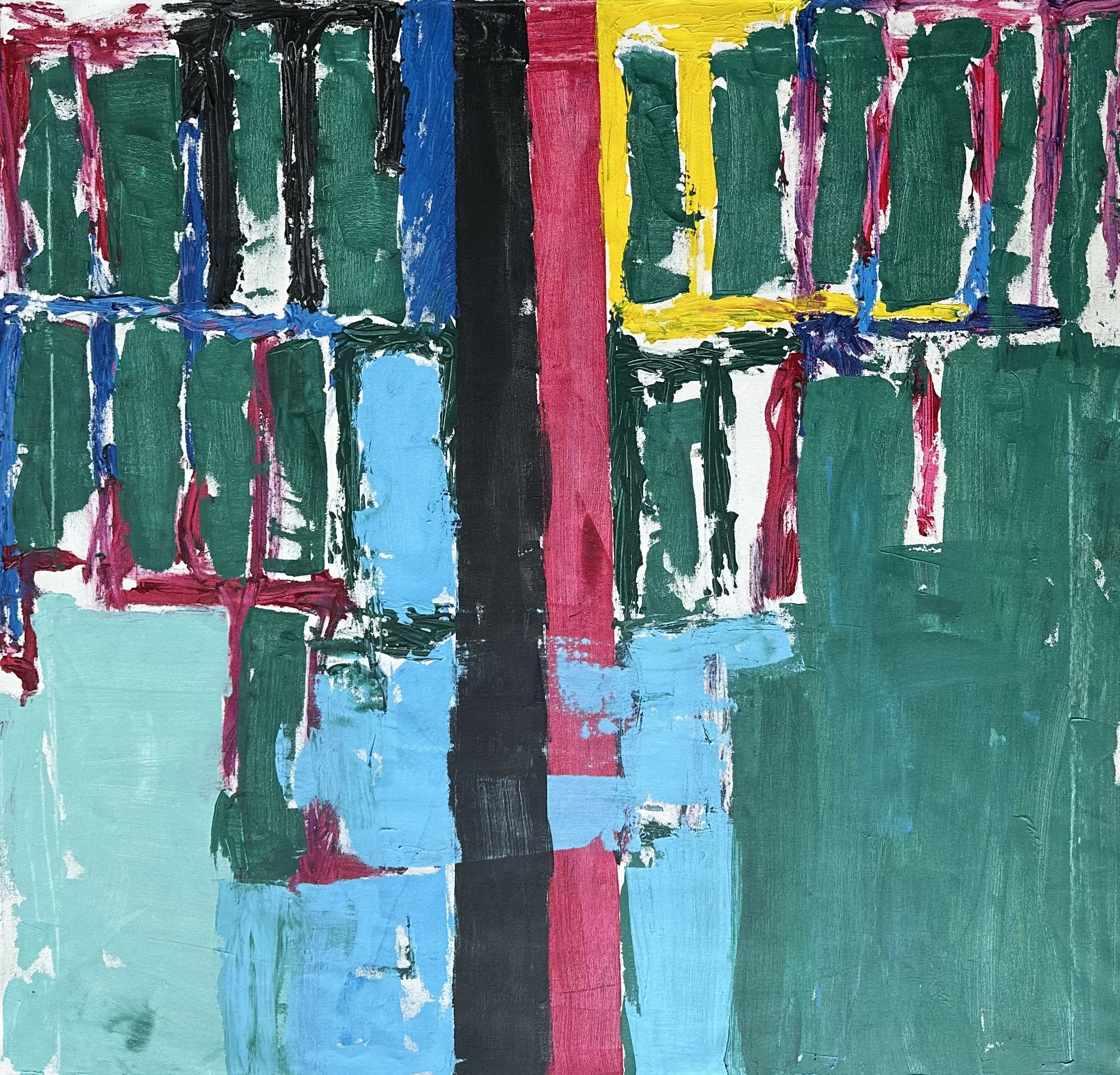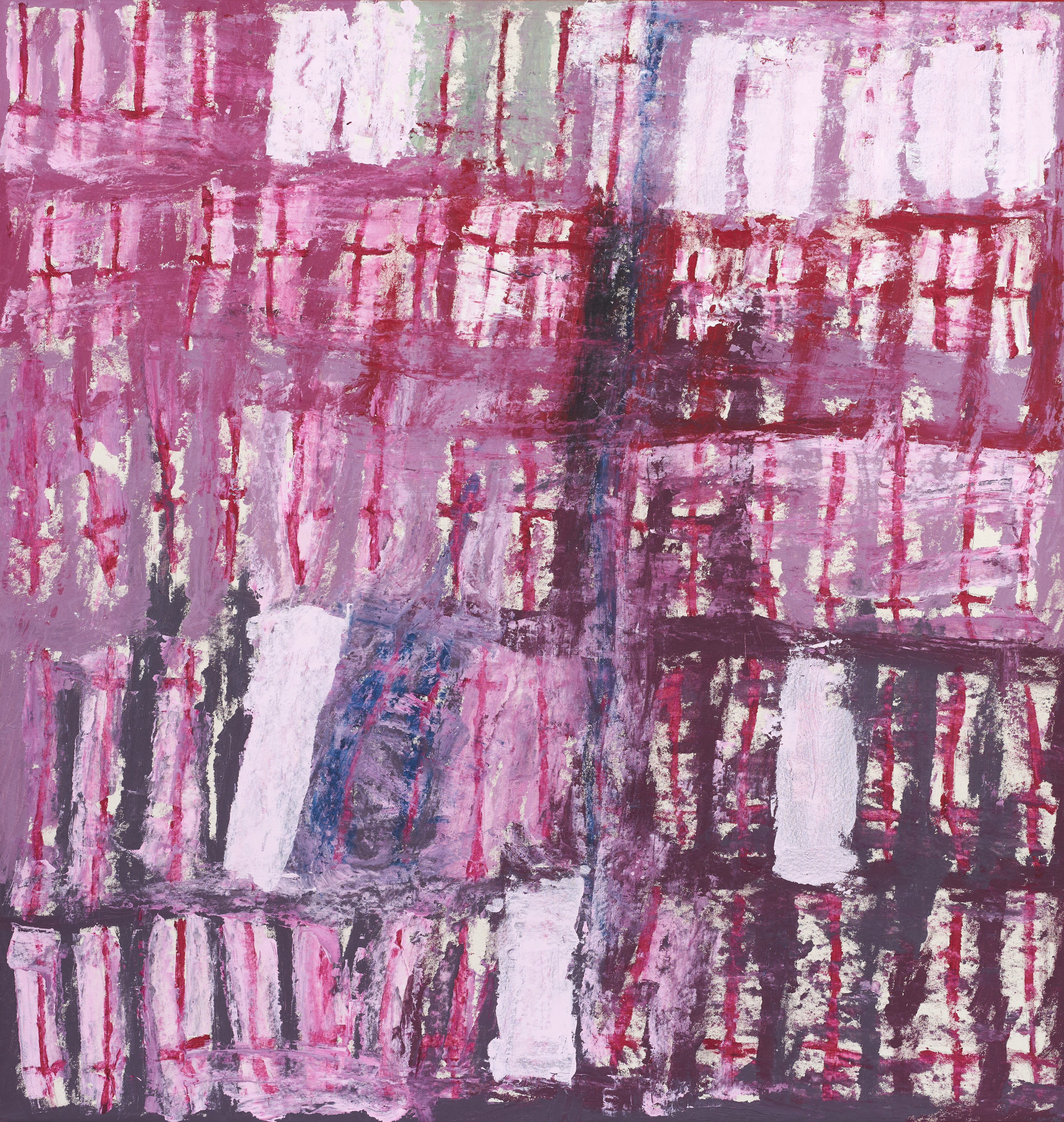
1. Could you please start by telling us about yourself and what first got you interested in painting?
My name is JC Bright, and I work across painting, curating and art history. I am currently based in Kent Ohio. I am a multifaceted creative who explored one of my interests and got stuck in it. What got me interested in painting was a table calendar I found in my mother’s medicine store in Port harcourt, Nigeria. Pages of the calendar featured contemporary Nigerian artists. From looking up these artists online, my eyes opened to the vibrant Nigerian Artscape. After that encounter, I dabbled into other things, like wanting to be a doctor before I pursued art at the University of Port Harcourt, where I graduated in 2019 with a first class bachelor’s in Fine Arts and Design.
2. You then went on to pursue a Master’s degree in African Art History at Kent State University in Ohio. How are Nigeria and the United States different for artists, and more particularly abstract artists?
I can mostly speak for myself, I wanted to test how another place affects my work. Particularly, the United States who is more receptive to abstract art. Which means more opportunities because I am at the center of it all. There are more conversations about abstraction here than in Nigeria, and living in these dialogues helps my art.
3. Who and what are the major inspirations for your art? Is there a particular period in time or art movement to which you mostly identify with?
The center of my art is color and loose geometry, and artists like Stanley Whitney influence how I navigate these factors. Also Ike Francis, my undergraduate teacher; but Temitayo Ogunbiyi is where I get the minimalist factor in some of my works. In general, I don’t conform to tags but borrow what excites me.

JC Bright, Okwukwu, Mbaise people and the afterlife, 2023
4. How do the abstract expressionists Jackson Pollock and Mark Rothko inspire your work? How do you create a conversation between American abstract artists and your Nigerian origins?
I am inspired by their audacity to present alternative concepts in their time. And I prefer to bask in my American influences without having to poster my Nigerianess. My origin is a constant in my brand as an artist, it doesn’t matter if I put it in my work or not. But viewers are free to establish links between these places as I don’t have a monopoly on what my art could or not say. But you may see my work as a disruptor of what people expect Nigerian art to be, and just like American artists troubled European figuration, my work defies market prescriptions for the African artist.
5. What is the process to create your work? You once mentioned a toothbrush and painting on the floor.
There is no protocol, I am very spontaneous. Yes, the toothbrush helps with the bold shaky rectangular bars in my work. And painting on the floor translates underlying textures onto the canvas. It is not a very strong effect but it is a better feeling than the smoothness of a stretched canvas.
6. How do you use colors in your work?
I deliberately make colors the entry point of my work, my hope is that they get noticed before anything else. Especially primary colors, and I try not stretch them beyond two or three variations. I begin my compositions with lights and conclude with shades. I like my paintings to not be too bright or too dark. Maintaining that middle ground is important to the work that I make. But I can't tell what the future holds for my palette.

JC Bright, Monuments in honor of Nwanyi Mbaise (12), 2023
7. What are you currently working on and what would be your dream project?
I work with a strict color palette, but I am thinking of new additions and how to fit them into my visual language. While I am fine tuning ideas for a series of miniatures for my next solo, I dream of a solo museum show. And because color is the root of my work, I am researching artists who worked/work in chromatism. I recently found Blinky Palermo. I think his series “To the People of New York City” is a powerful body of work. Other artists in my radar include Atta Kwami, Joe Bradley, Odili Odita, etc
8. Where did you get your inspiration from for the Ezigbo Nnem series?
I have paid homage to my mother for sometime now and that was the topic for my solo exhibition in Ghana. This series is a slight twerk on works from that exhibition. Ezigbo Nnemis Igbo for my good mother, it was inspired by my recent achievement of a graduate degree in Art history. The milestone reminded me that my mother laid a key career foundation by funding my Bachelor’s education.
9. How do you think painting is an effective medium of expression? Are you planning on working with other mediums too?
I will say that painting was faster in capturing my interest, there is no specific reason as to why it is the main medium. I believe colors are stronger in conveying my controlled chaos, the fluidity of the medium permits the factor of chance in my work. I doubt the rigidity of three dimensional mediums can permit as much chance as there is in painting. Though I may explore installation and sculpture in the future.
